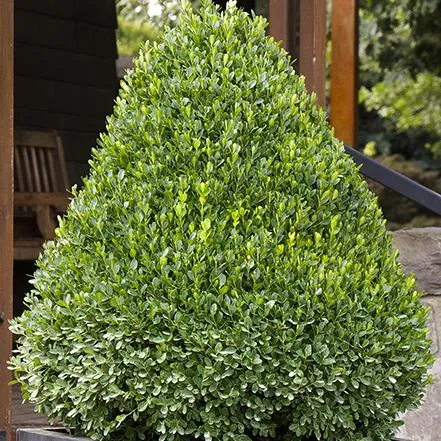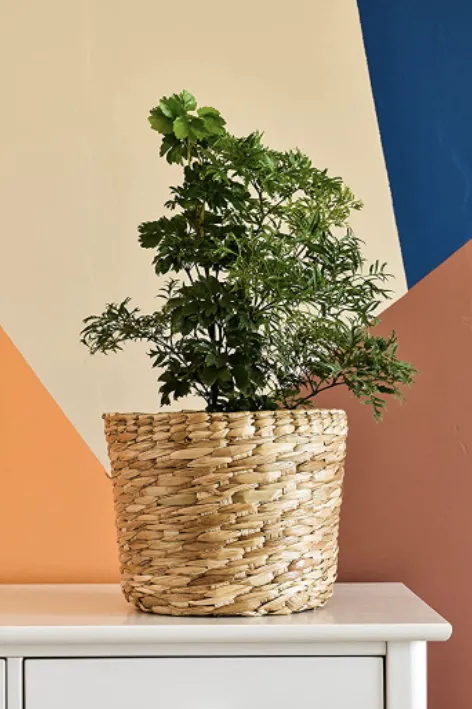Houseplants That Will Give Your Home a Forest Feel
If you love the look of trees but don’t have the space for real ones in your home, fear not! There are several houseplants that can deliver a tree-like vibe. In this article, I’ll discuss 10 options that will make it seem like you’ve brought a little piece of the forest indoors.
1. Dracaena
- Dracaena marginata, commonly known as Madagascar dragon tree, is one of the best choices if you want a houseplant with a trunk-like form. From my experience caring for dracaenas, they can reach several feet tall over time and develop multiple woody stems like a small tree. Their long, strap-shaped leaves have a leathery texture reminiscent of tropical foliage.
- Another great dracaena variety is D. fragrans, nicknamed the corn plant due to its stiff, corn-like leaves. It tends to grow more vigorously than D. marginata and needs a little more sun. Both species thrive in medium to low light and don’t require frequent watering once established.
2. Ficus Alii or Minima Bonsai
Ficus trees make convincing miniature indoor “bonsai” versions. Ficus ali, also called fiddleleaf fig bonsai, has glossy oval leaves and often branches in an artistic, windswept style if trained properly. The diminutive Ficus minima bonsai looks like a cute cartoon tree due to its thick, short trunk and small rounded leaves. These ficus bonsai need regular pruning and wiring to maintain their tree-like form.
3. Chinese Evergreen
The Chinese evergreen (Aglaonema) has colorful, broad leaves arranged like the foliage of small ornamental trees. Their patterns range from plain green to bright shades of reddish-pink, white, or dark maroon edged in lime. Chinese evergreens thrive with medium light and don’t demand much water as long as the soil dries slightly between waterings. They can grow 2-3 feet tall, spreading out like a low-maintenance accent plant.
4. Money Tree
Also called Pachira aquatica, the money tree has thick, braided trunks and broad rounded leaves somewhat resembling those of citrus trees. According to some traditions, it brings wealth and prosperity to the home. Many money trees come pre-trained in braided styles to resemble miniature banyan trees. In my experience, they adapt well to most light conditions as long as the soil remains moderately moist.

5. Norfolk Island Pine
With its delicate emerald fronds, the Norfolk Island pine (Araucaria heterophylla) seems plucked straight from an oceanic rainforest. It forms a neat pyramid shape like a coniferous tree but remains sufficiently small at 4-6 feet for indoor conditions. I once had a Norfolk Island pine that thrived for over a decade with occasional watering and weekly wipe-downs of its soft needles. They fetch a handsome price but are a worthwhile investment for their tropical foliage.
6. Parlour Palm
With their upright habit and feather-like fronds resembling palms, parlour palms (Chamaedorea elegans) can attain tree-like stature and add jungle flair to living spaces. They grow well in medium temperatures and bright, indirect light. However, overwatering was an issue I encountered until adjusting their care. Parlour palms prefer consistent moisture without getting soaked, so check the soil regularly and allow it to partially dry between waterings.
7. Umbrella Plant
Also called umbrella tree or Japanese aralia, Schefflera actinophylla is tough to miss with its clusters of roundish leaves resembling an open parasol. It’s often braided for a funky sculptural look mimicking tree trunks. From my experience, umbrella plants thrive with a range of light intensities as long as the soil retains some moisture. Their umbrella shape transforms small spaces into a textured green oasis perfect for collecting dust on their hairy leaves!
8. Rubber Plant
With their leathery, waxy foliage and statuesque habit, rubber plants (ficus elastica) are a classic choice for faux tree appeal. Their broad,dark green leaves provide good foliage coverage like large tree canopies. While rubber plants prefer warmer conditions and protection from drafts, they generally adapt to varied light levels if acclimated gradually. With care and time, they become substantial specimens resembling short umbrella trees or bushy accent plants.

9. Dwarf Date Palm
The feather-like fronds and thick stature of Phoenix roebelenii , the dwarf date palm, impart such stunning tropical charm. They grow compact enough for homes at 4-6 feet, clustering together for a grove-like effect. Though slightly pickier moisture-wise than some other trees, dwarf date palms remain relatively problem-free when conditions suit them. Their exotic beauty and miniature but stately presence make them well worth the care.
10. Dwarf Bamboo Palm
For the fastest growing “tree” option indoors, turn to dwarf bamboo palms (Chamaedorea seifrizii). Within a year, they gain 3-4 canes and 2-3 feet in height and spread. Their slender evergreen stalks develop a classic groomed palm frond shape while remaining compact. In my experience, dwarf bamboo palms take well to both sunny and shady spots with drainage-friendly, consistently moist soil. They thrive on neglect once established and serve as a hyper-speed tree simulation!
So in summary, those 10 houseplants – from dracaena and ficus to umbrella trees, palms, and more – can bring tree-like grandeur to any indoor jungle. With some care and time, many grow quite large, branching, or full-foliaged like real trees. Experiment to see which variety fits your space and light conditions best. With patience and green thumbs, your home may one day feel just like the forest! Let me know if you need any other plant or care tips.
Houseplants that Look Like Trees
| Plant Name | Height | Care Level | Light Needs |
|---|---|---|---|
| Weeping Fig | 3-6 feet | Moderate | Bright indirect light |
| Dumb Cane | 2-4 feet | Easy | Medium light |
| Chinese Evergreen | 3-5 feet | Moderate | Bright indirect light |
| Ponytail Palm | 3-6 feet | Easy | Medium to bright light |
| Bamboo Palm | 4-6 feet | Moderate | Bright indirect light |
| Lady Palm | 6-10 feet | Moderate | Medium to bright light |
FAQ
-
What kinds of houseplants look like trees?
There are quite a few. Basically, some common ones are money trees, weeping figs, ficus trees, and dwarf palm trees. You can grow them indoors and they’ll sort of mimic the shape of trees.

-
Do they need a lot of space?
While they may seem huge, most tree-like houseplants don’t require a massive amount of room. Some stay quite kinda small. It depends on the plant. A money tree will stay fairly compact, but something like a ficus might get to be 6 feet tall given enough years. So check the expected size before buying.
-
How much sunlight do they need?
For the most part, tree-shaped houseplants need moderate to bright light. Direct sun is usually okay as long as their leaves don’t get scorched. Money trees and ficus trees can tolerate low light pretty well compared to other plants. Dwarf date palms prefer the most sunshine. No matter what, insufficient light will cause them to stretch outward for more rays.
-
Do they need frequent watering?
Most tree-like houseplants need moderate watering, which means the soil shouldn’t be constantly soggy or bone dry. You want it to dry out somewhat in between waterings. Pay attention to how quickly the soil dries and go from there. Apparently, money trees tend to be the most forgiving if you forget to water them sometimes. According to the Farmer’s Almanac, they’ll let you know when thirsty by wilting their leaves a bit.
-
How do you prune them?
Pruning tree-like houseplants helps control their shape and size. For leggy ones, you can trim off inch or so of new growth to encourage branching. Snip off dead or diseased parts too. Ficus trees respond well to pruning. As for money trees, people say you can basically prune them however you want since they grow in braided trunks. Still, take it slow at first so you don’t shock the plant.

-
Are there any that need very little care?
If you’re basically hopeless with keeping plants alive, a few tree-shaped varieties may work well. According to an article in House Beautiful, the parlour palm and snake plant can withstand some abuse. They don’t need tons of sun or water. The panda plant supposedly looks like a mini bamboo forest too. It’s sort of hardy and forgiving of neglect. You might also try a fiddle-leaf fig if you give it bright light.. Although they say those can be “divas” at times.
Ultimately, many tree-like houseplants add a sense of nature indoors while taking up relatively little floor space. Money trees are likely the easiest options because they’re quite forgiving. However, don’t give up if your first try doesn’t thrive. Plants are a learning curve, and the care needs can vary a lot. With some trial and error, you’ll probably find an indoor “tree” buddy to keep you company.
